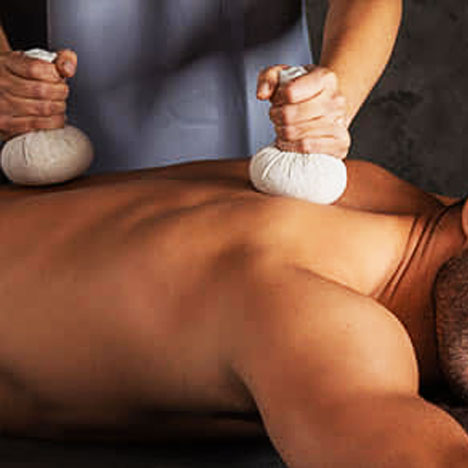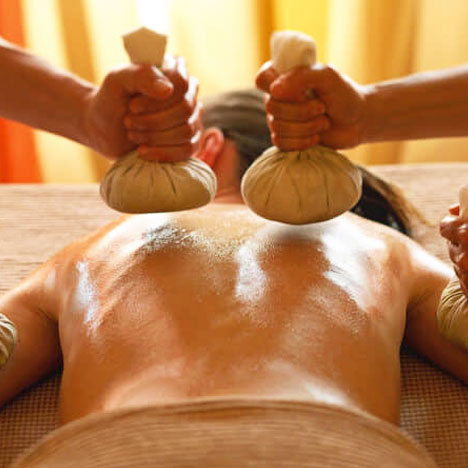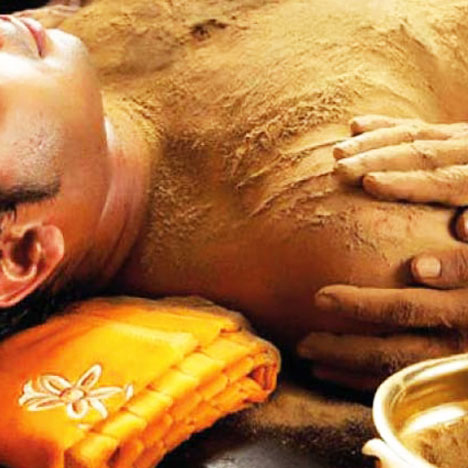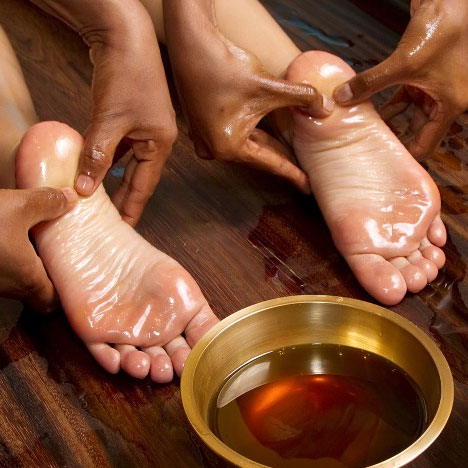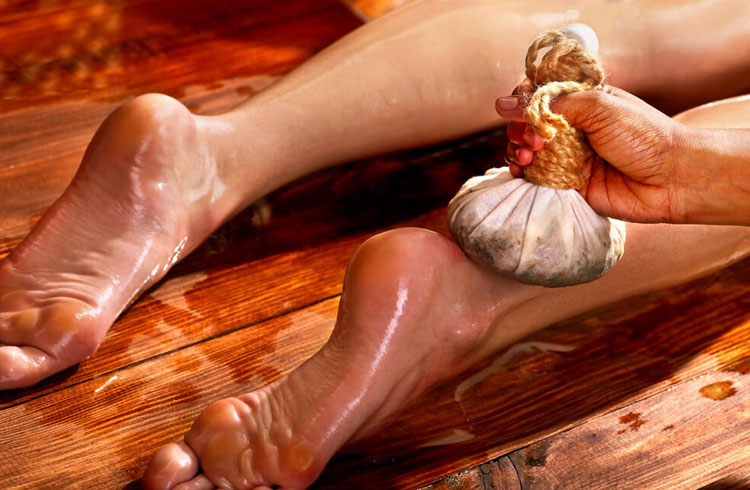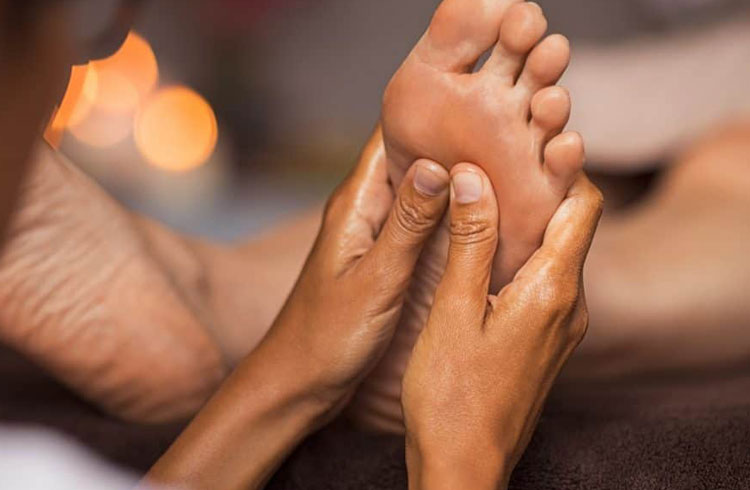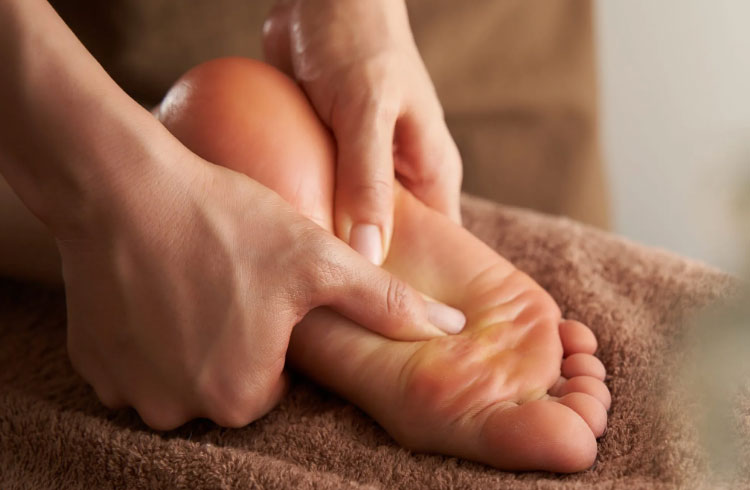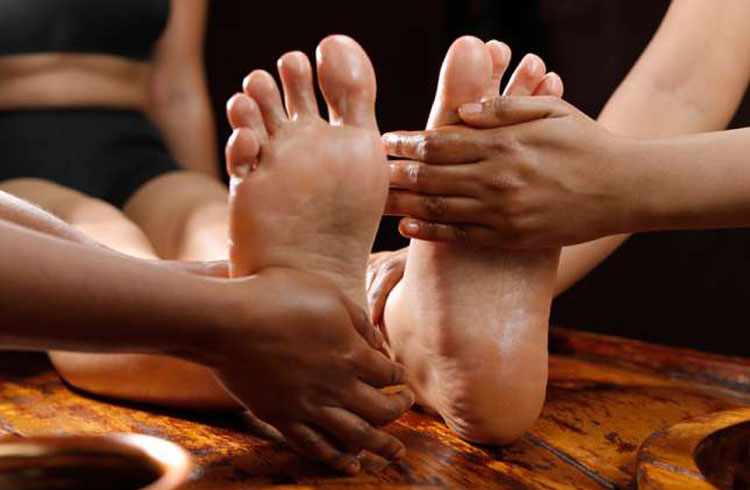Ayurveda offers foot massage and herbal treatments to promote circulation, reduce pain and swelling, and improve overall foot health. It can also help to relieve stress and promote relaxation.
Padabhyanga is one of the most important Ayurvedic massage techniques and refers to the foot massage in Ayurveda. It is an extremely soothing and relaxing treatment in which the feet, legs and knees are gently massaged with nourishing oil. After an Ayurvedic foot massage you are not only deeply relaxed, but also softy supple feet! What exactly happens during the Padabhyanga massage is rejuvenates foot completely.
How does the Ayurvedic foot massage work?
The feet (pada) are of great importance in the Indian tradition - because with them we are in contact with the earth. In Ayurveda the human body is seen as an inverted tree.The roots are at the top ie, at the head and branches (hand & feet) are pointed downwards. In the same way,the human body feet will show, whether it has been well treated and nourished. This is why Ayurvedic foot massage has a very long tradition.
In Ayurveda, the foot massage is a soothing and vitalising ritual. Before the Padabhyanga, a 5 to 10-minute relaxing foot bath with fragrant herbs is usually offered. The subsequent massage is then performed while lying down. The prime focus of the treatment is on the feet, but lower legs, thighs and knees are also included. The feet are first rubbed with a warm medicated oil or ghee.
Then the masseur begins to massage the toes with soft movements, followed by the back of the foot, the sole and the calves. The massage techniques used are gentle circular and stroking movements. The ankle, the arch of the inner side of the foot and the heel receive circular movements, while stroking movements are performed on the back of the foot, the toes and the spaces between the toes. If you would like to try Ayurvedic foot massage yourself, we have instructions for you here.



